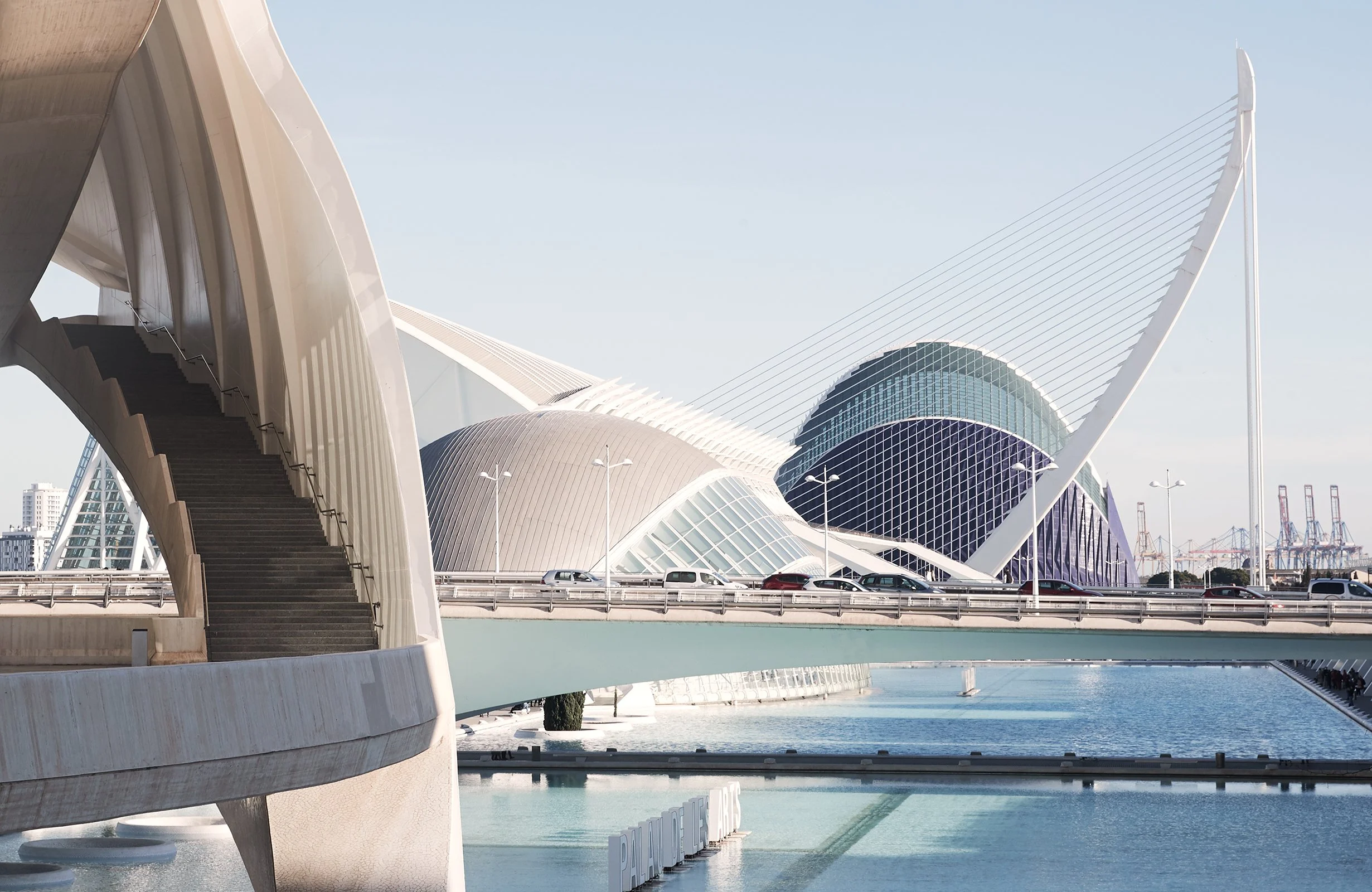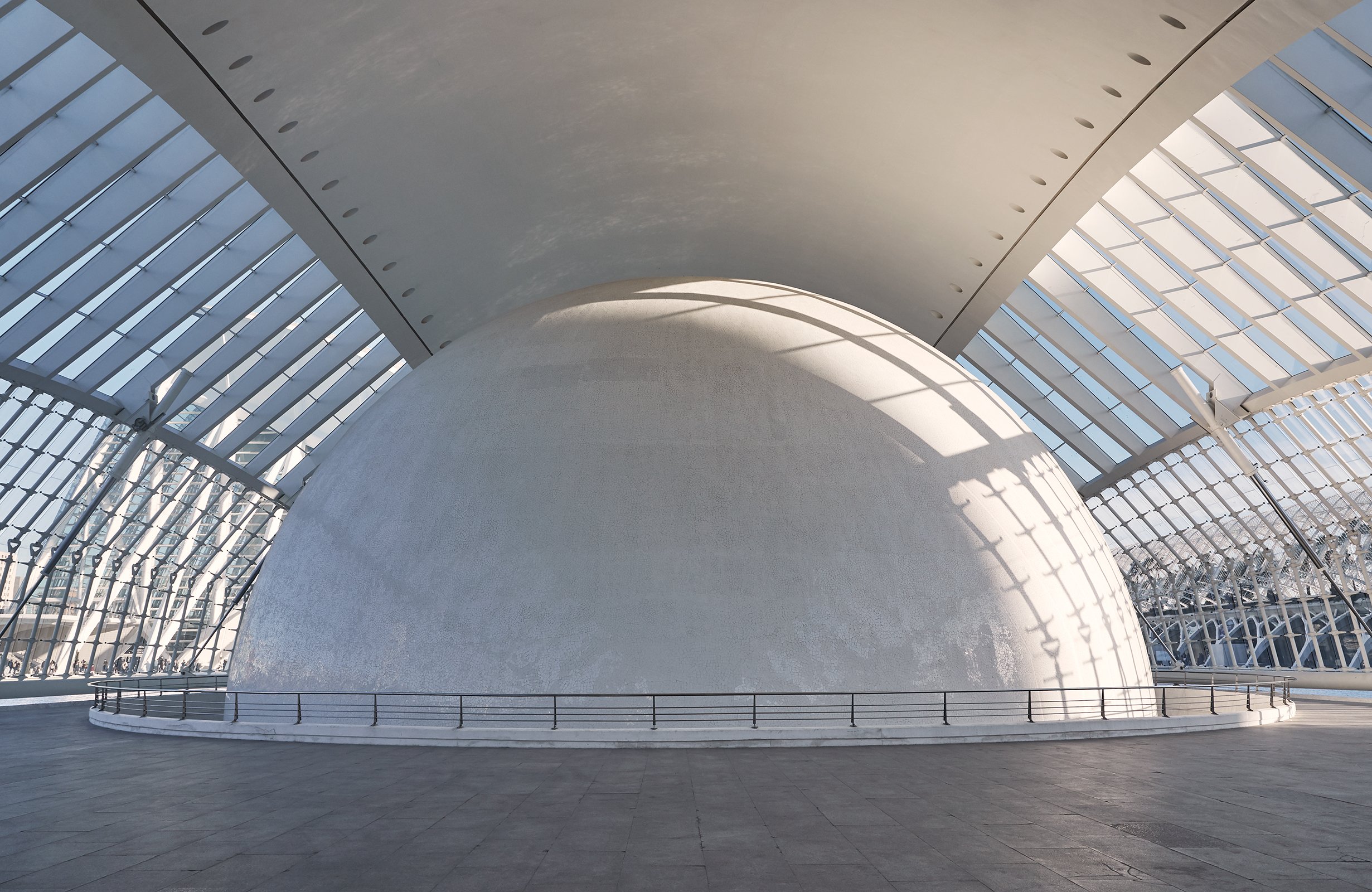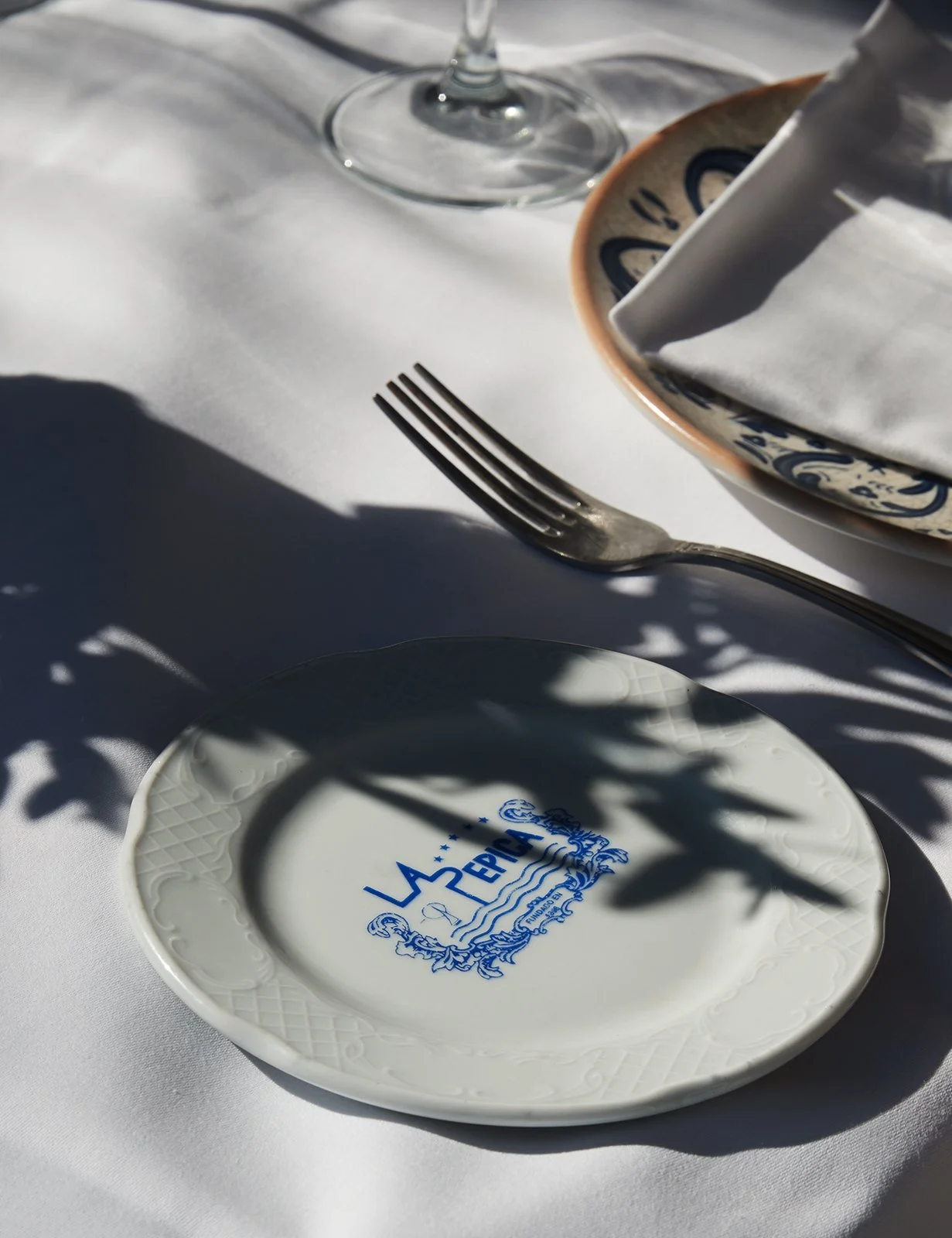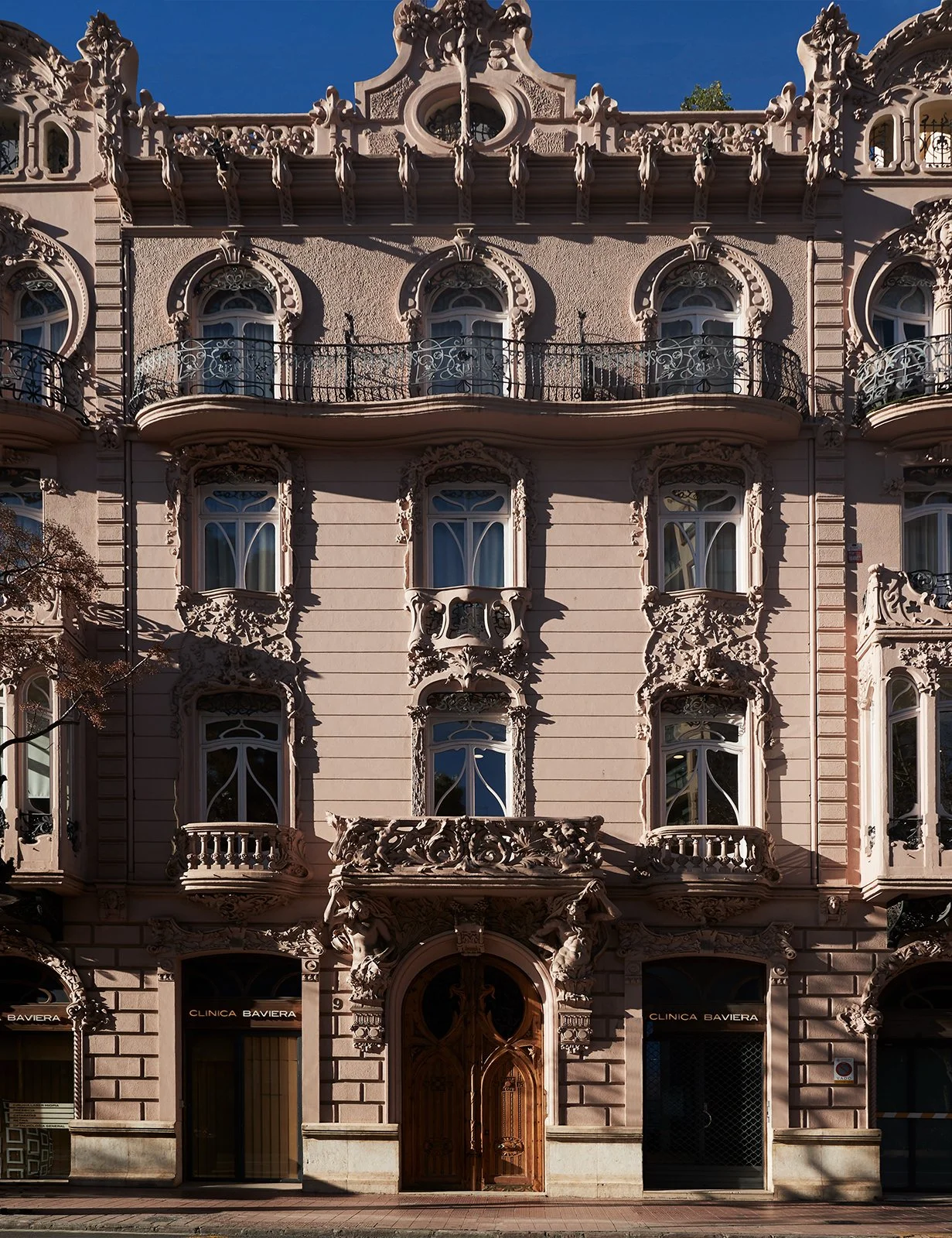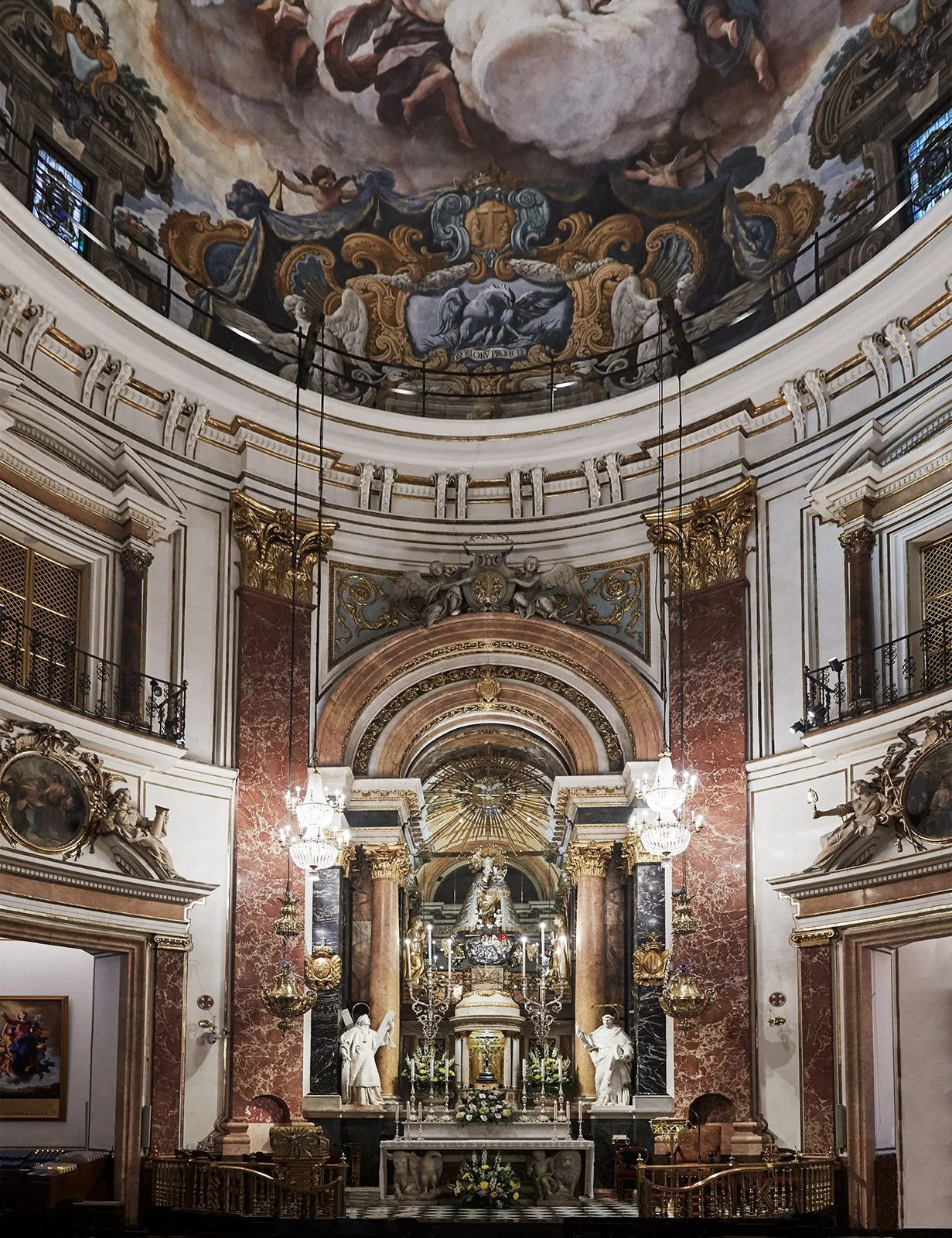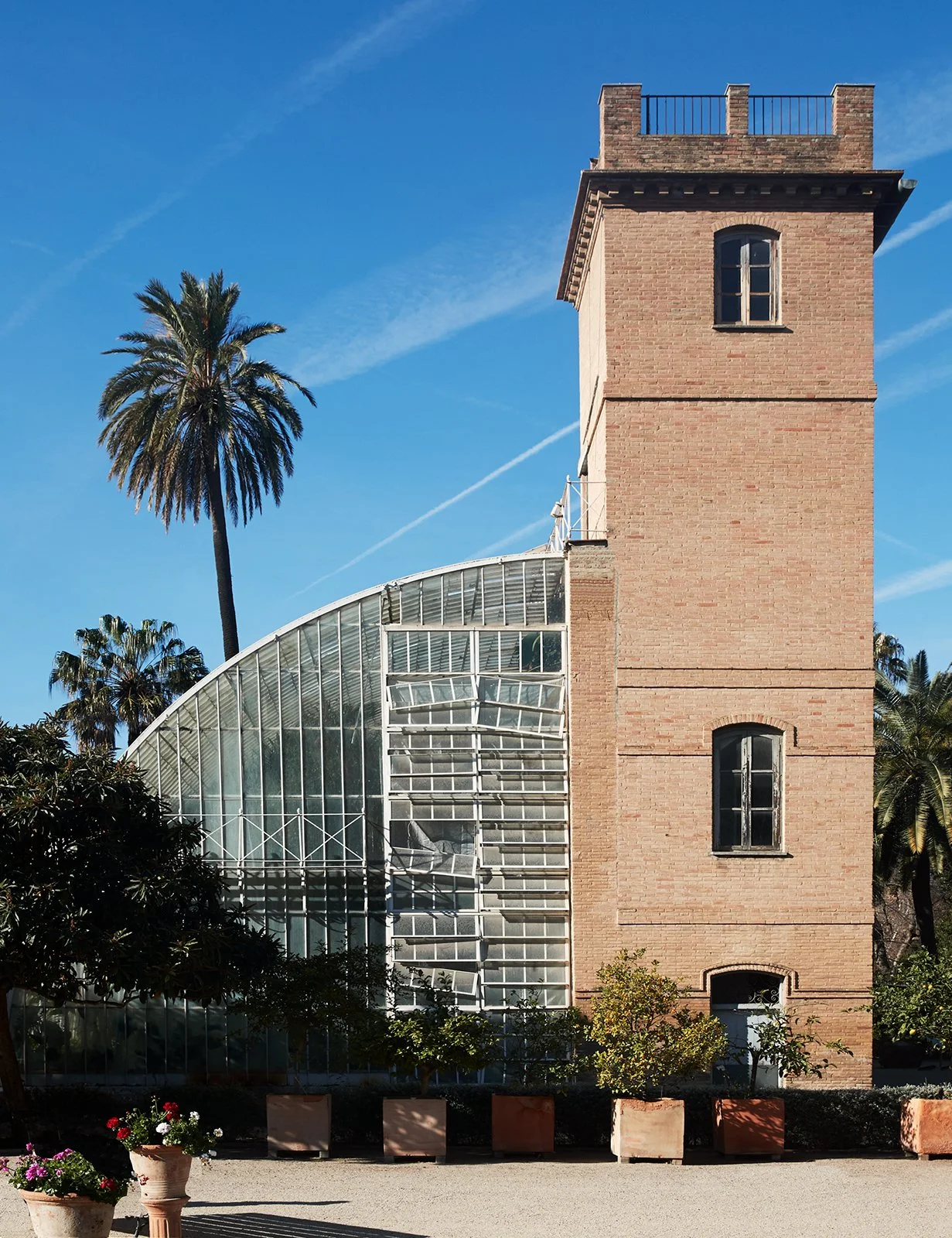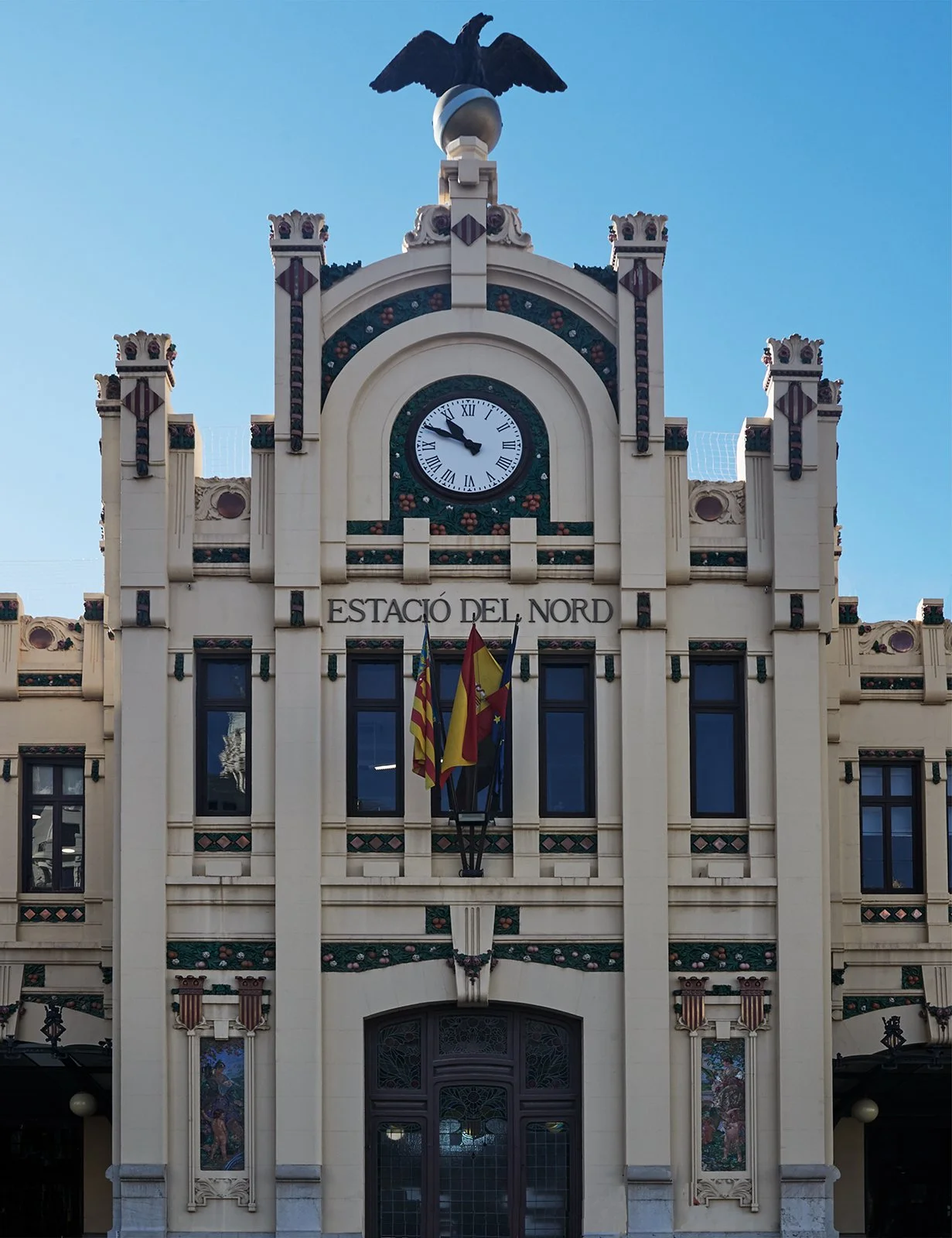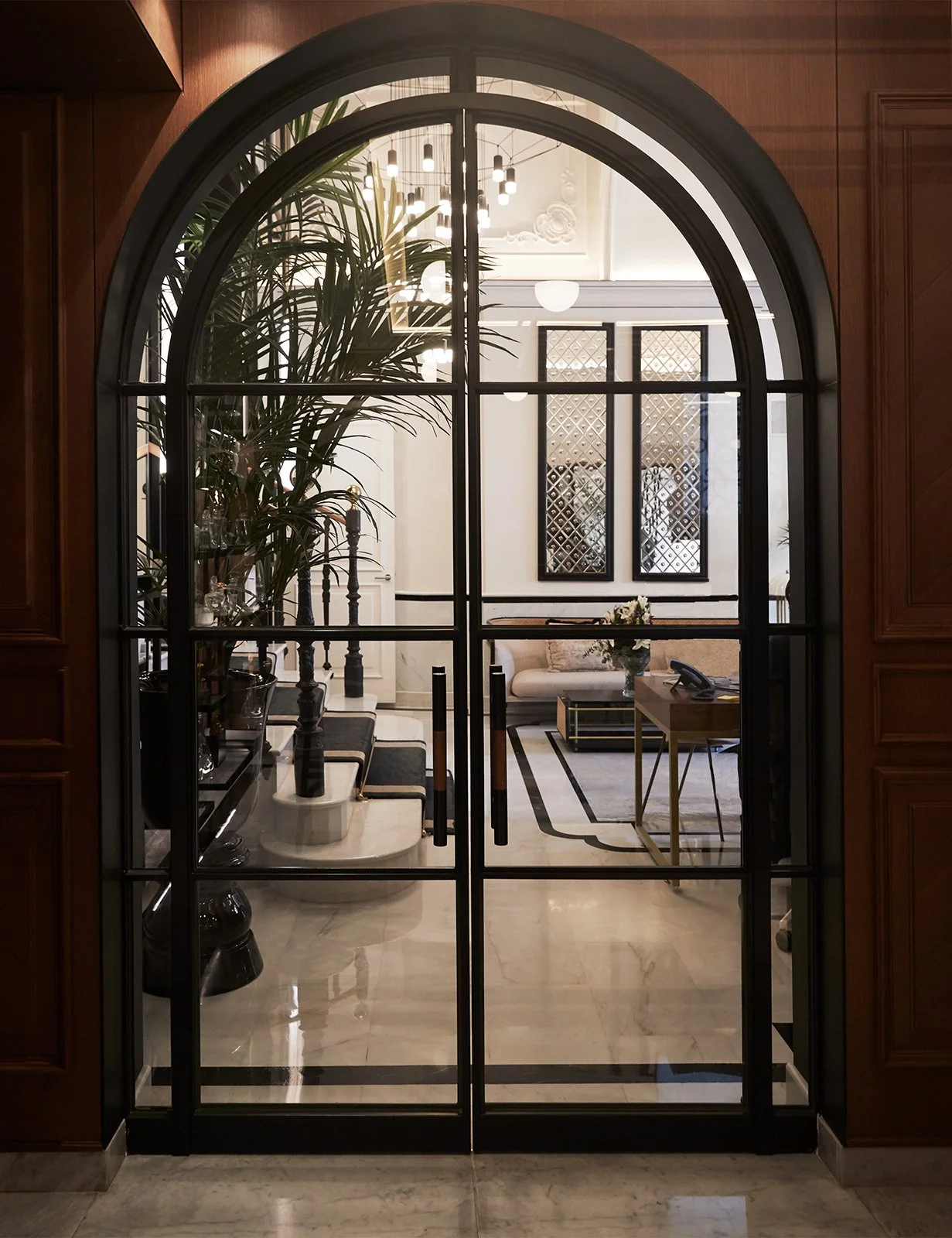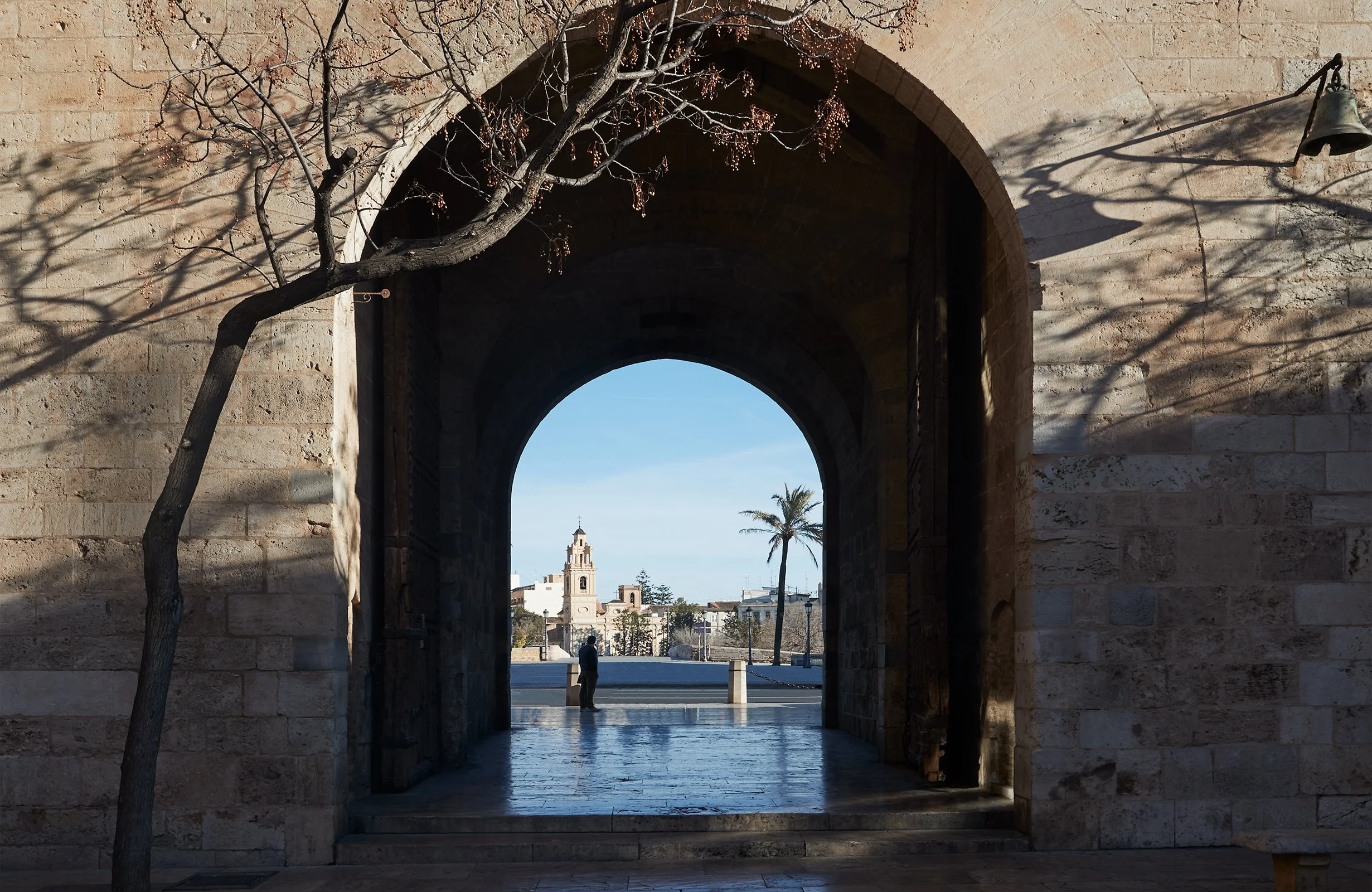Valencia / Opulence and Oranges
Category: Travel Guide
Location: Valencia, Spain
Visiting Valencia’s City of Arts and Sciences is a transformative experience, the sheer size and scope of the project almost impossible to take in. Designed by Santiago Calatrava and Félix Candela, the project began its first stages of construction in 1996, inaugurated two years later with the opening of L’Hemisfèric. The building is meant to resemble “the eye of knowledge” and is the centrepiece of the area.
Its design resembles an eyelid that opens to access the surrounding water pool.
The project was initially budgeted at €300 million but has expanded three times the initial expected cost, and so for many locals, it’s not only a place to enjoy but also a symbol of corruption and money laundering.
The Museu de les Ciències Principe Felipe is an interactive museum that resembles the skeleton of a whale, while L’Umbracle is an open structure enveloping a landscape walk with plant species indigenous to Valencia (such as rockrose, rosemary, lavender, bougainvillaea, and palm trees). It also harbours the Walk of the Sculptures, an outdoor art gallery.
The plants were carefully picked to change colour with each season.
The city regularly attempts to draw visitors to L’Oceanogràfic, an open-air oceanographic park, which has been repeatedly criticised for its inhumane treatment of the animals and fish that live here in captivity. It’s a beautifully designed torture chamber and it’s well advised to not contribute to it financially. Instead, continue to Palau de les Arts Reina Sofia, an opera house and performing arts centre dedicated to music and the performing arts.
The Montolivet Bridge is a concrete road bridge that crosses the dry Turia riverbed, while L’Àgora is a covered plaza for concerts and sporting events and the latest addition to the ambitious project.
The final part, Valencia Towers, is yet to be built, due to the already enormous amount of money that has been spent.
Right next to the City of Arts and Sciences is the Palau de la Musica, designed by lauded architect José Maria de Paredes, considered one of the most important concert halls in Europe. Its enormous glass dome runs parallel to the Turia riverbed park, a popular place for picnics among the locals.
Opposite is a pool especially designed for this place by Ricardo Bofill.
The City of Arts and Sciences might look like a drastic departure from the more traditional style of the rest of the city, but there is a subtle clue that ties the contemporary architecture with the surrounding neighbourhoods – trencadís, a technique of broken tile mosaics, is used on many of the buildings’ exterior surfaces. It’s an ancient tradition typical of the region and connects the city’s most recent development to its long and rich history.
Valencia by the Sea
Past the City of Arts and Sciences lies Valenica’s marina. Long stretches of sandy beaches and a series of seaside restaurants, including La Pepica, famous for its paella and being a favourite of Ernest Hemingway (who was such a regular that he at times even worked preparing food in the kitchen).
For those in the mood for even more paella, La Maritima is another excellent choice.
The main draw in this area is La Sastreria, one of the most beautifully designed restaurants in all of Valencia. Its maritime menu is reflected in the blue-and-white ceramics of the bar, creating wave-like effects to imitate the flows of the sea.
Valencian Architecture and Love of Oranges
As pleasant as it is spending time by the sea, Valencia’s main claim to fame lies closer to its city centre. Valencia Gothic is an architectural style that dominated this region between the 13th and 15th centuries, at the end of the European Gothic period and the beginning of the Renaissance.
The Kingdom of Valencia achieved its height during the early 15th century, with a solid economy centred around trading through the Mediterranean.
The local industry, especially textile manufacturers, achieved great development, as manifested through the impressive Llotja de la Seda (in English: Silk Exchange), of the finest European examples of civil Gothic architecture.
Built between 1482 and 1533 loosely inspired by a similar structure in Palma de Mallorca, it’s composed of three parts as well as the Orange Garden, a walled courtyard. It was a financial centre, where the merchants worked out contracts. The Hall of Columns is especially worth a visit.
Across from Llotja de la Seda is Mercado Central, the largest market with fresh produce in Europe, located in one of the most emblematic modernist buildings in the city, full of decorative references to the orchard and gardens in Valencia. Its structure is formed by iron columns, combined with tiles and stained glass.
Just a few steps from Mercado Central is Sombreros Albero, the best hat shop in Valencia and the country’s oldest milliner, established in 1820 and stocking a dizzying range of styles, from swimming bonnets to cowboy hats.
There is also a mercado in another part of town, Colón Mercado, once a market but today home to flower stalls and restaurants. It was designed by Francisco Mora Berenguer and is today one of the most iconic examples of Valencian art nouveau. Its interior decoration displays elegant ceramics, the products of the Valencian lands, and respective fauna and flora of the region.
Colón Mercado is in the neighbourhood of Ensanche, one of the areas with the highest purchasing power in the city. It’s a great part of Valencia, with interesting shops and nice restaurants, perfect for going on a stroll just to enjoy the scenery.
Like many other parts of the city, many streets here are lined with orange trees.
Oranges were first introduced to Valencia by the Moors in the 10th century, principally as an ornamental decoration for their palaces and mosques, filling their gardens with the aroma of orange blossom. But it wasn’t until the 18th century that Valencians began to consider oranges as a serious business. Eventually, the orange trade would finance huge urban development projects in the city., including the Ensanche. Still today, orange blossom is associated with good fortune and the flower is always present in Valencian bridal bouquets. And after marriage, you refer to your spouse as “the other half of my orange”.
Part of Ensanche is Ruzafa, Valencia’s most youthful and trendiest neighbourhood. It was a town in its own right until 1877. This is home to many small and independent cafés (La Más Bonita and Bluebell Coffee) and artisan breweries (like Olhöps o Ruzanovol). At night, you’ll find several bars as well as smaller music venues and DJ sessions.
With one of the largest historic centres in Europe, and a very dynamic history, it’s no wonder that the city is known for its many interesting churches. Most of them were built on mosques from the city’s Islamic era. The Gothic cathedral is built on the grounds of a Roman temple (and later, the main mosque), and includes also a bell tower, a lantern tower, and a chapel.
Next door is the Basilica of the Virgin of the Forsaken, a “new” work in the Baroque style. One of the most popular churches to visit is however San Nicolás, its painted ceilings having earned its nickname “Valencia’s Sistine Chapel”.
In an opposite part of town, just outside of the historic centre, Bombas Gens Centre d’Art is a former factory turned art exhibition. The building, constructed in the 1930s, is a great example of the geometrical Art Deco style, today home to both an art collection, focused on photography and abstract art, and a private foundation.
Only a few minutes away is Valencia’s Museum of Fine Arts, Spain’s second largest art gallery. Don’t miss the collection of Renaissance paintings!
Had enough historic buildings? Valencia’s botanical garden offers, with its shaded walkways and quaint palm tree hoses, a respite from the hustle and bustle of the city.
Planning to continue your travel in Spain after your time in Valencia? Make sure to study the beautiful modernist architecture of the Estacio del Nord (North Railway Station) when leaving.
Where to Eat and Drink
Valencia is Spain’s third largest city and so of course there is an abundance of places to go. If you stay long enough at Bombas Gens, the Ricard Camarena restaurant will eventually open its doors. With a Michelin star, this is one of the best places in Valencia you can eat.
In Ruzafa, Baovan – with the fitting slogan “Beach, beers and baos” has one of the most appealing interiors. Only a few blocks away, Fierro is a gem, serving light but delicious food. However, they only have four tables, so reservations are recommended.
Looking for a natural wine bar? In Valencia, Terra a vins, only a few blocks from Colón Mercado, is arguably the best.
While in Valencia it’s more or less mandatory to try the Agua De València, a local cocktail made with freshly squeezed orange juice, cava, vodka, and gin. As you can imagine, you need to be careful when drinking this, so you don’t overdo it. It’s a fruity cross between a mimosa and a sangria, like drinking Spanish sunshine.
Where to Stay
Hotel Palacio Vallier is housed in a 19th century mansion in central Valencia. Parts of the building, a former Roman perfumery, dates to the third century. If you want to relax away from the crowds, the rooftop terrace offers a great view of the city, otherwise the hotel bar is a perfect place to unwind for a bit.
Hotel Helen Berger combines modernist rooms with a nice restaurant and bar, and unparalleled service.
Caro Hotel is set in the heart of the old town, in the palatial former home of the Marques de Caro. Summertime, the plunge pool with sun beds offers a place to cool down.
Links
Hotels
Hotel Palacio Vallier – the luxurious option.
Hotel Helen Berger - friendly atmosphere, with a touch of mid-century design.
Caro Hotel – comfortable rooms and a very central location.
Restaurants and bars
Baovan – conceptual design and budget-friendly food.
La Pepica– Hemingway’s favourite paella.
Mercado Central – great local produce.
Colón Mercado – relaxed dining options in trendy Ruzafa.
La Maritima – great paella by the sea.
Ricard Camarena restaurant – fine dining in sleek surroundings.
La Sastreria – best restaurant design in Valencia (and the food isn’t bad, either).
Terra a vins – natural wine bar.
Sights
San Nicolás – the Sistine Chapel of Valencia.
Basilica of the Virgin of the Forsaken – one of the great churches in Valencia.
Bombas Gens Centre – contemporary art centre.
City of Arts and Sciences – spectacular design and exhibition spaces.
Llotja de la Seda – for centuries, the symbol of Valencia.
Valencia’s botanical garden – cozy park.
Museum of Fine Arts – impressive art museum.
Agua De València, recipe
500ml orange juice
100ml vodka
100ml gin
1 tsp sugar
2 limes, sliced
1 orange, sliced
500ml sparkling wine
Add the orange juice, vodka, gin, sugar and fruit to a jug. Stir well.
Fill 6 glasses with ice and pour over the cocktail.
To finish, top up each glass with sparkling wine.

